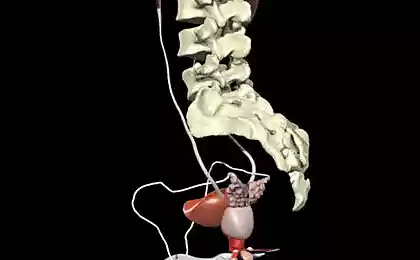18
Meta-alarm: How to Stop Worrying About Being Worried
A scientific approach to breaking the vicious circle of internal tension

Imagine sitting in a cafe, enjoying your coffee, and suddenly your heart starts beating faster. "What is this?" you think. "What if it's something serious?" And now a cascade of thoughts is launched that turns an ordinary day into an emotional roller coaster. Welcome to the world of meta-anxiety, a state where we worry about the very fact of worry.
This phenomenon affects millions of people around the world, turning the body’s natural defense response into a source of constant discomfort. But what if I told you that this is not a verdict, but a feature of our amazing but sometimes overzealous brain?
The Anatomy of Double Anxiety: When the Defender Becomes the Aggressor
Anxiety is an ancient survival mechanism honed over millions of years of evolution. Our ancestors, thanks to it, escaped from predators and avoided deadly dangers. But the modern world has set new, more nuanced challenges for this system: how to respond to deadlines, social networks, and the uncertainty of the future?
40%
Adults experience anxiety disorders
73%
They are worried about their anxiety.
2x
increased symptoms in meta-anxiety
The problem arises when our inner watchdog starts barking at its own bark. Meta-alarm It starts the moment we begin to perceive anxiety as a threat. The brain receives a signal: Attention! We're worried! This is dangerous! and activates an even more powerful wave of defensive responses.
Combating anxiety is like trying to put out a fire with gasoline – the more effort you put in, the more flames flare up.
Circular physiology
When we experience primary anxiety, the sympathetic nervous system is activated: the pulse increases, the pressure rises, the muscles tense. It's a normal reaction. But when we begin to fear these sensations, a secondary cascade of stress hormones – cortisol and adrenaline – is triggered. This is a biochemical feedback loop that can last for hours.

Liberation strategies: from resistance to acceptance
Method 1: Radical acceptance
Guest in the House Technique: Think of anxiety as an unexpected but not hostile guest. You don't have to entertain him, but you don't have to force him out. Just admit, "Hi, alarm. I see you're here. You can stay, but I'll mind my own business. ?
The paradox of acceptance is that when we stop fighting anxiety, it loses its destructive power. Studies of neuroplasticity show that the brain, devoid of resistance from consciousness, naturally returns to a state of equilibrium.
Method 2: Metacognitive therapy
Key Principles: Separating Thoughts from Reality
The development of the "watching self"
Cessation of mental gum
Focus on the moment
The essence of the method is to learn to look at your thoughts as clouds in the sky of consciousness. They appear, transform and disappear. Your task is not to fight them, but simply to observe while remaining the one who observes.
Exercise 5-4-3-2-1: Name 5 things you see, 4 things you can touch, 3 things you can hear, 2 things you can feel with your nose, 1 things you can taste. This instantly switches the brain from alarm mode to presence mode.
Method 3: Expressive release
Anxiety is an energy that is looking for a way out. The more we suppress it, the more internal pressure we create. Research in the field somatic psychology The physical expression of emotions significantly reduces their intensity.

Writing drain technique: Every morning for 10 minutes write everything that comes to mind without editing or analyzing. This is not a diary, it is a way to free mental space from the accumulated junk.
Rational and Irrational Anxiety: Learning to Distinguish
Not all anxiety is equally useful. Adaptive anxiety helps us prepare for real challenges: exams, interviews, and important conversations. Disadaptive anxiety lives in the virtual reality of our fears, feeding off what-if scenarios.
Distinction criteria:Rational: is related to a specific situation, has a time frame, motivates to act
Irrational: vague, timeless, paralyzing the will
The question is not how to get rid of anxiety forever, but how to learn to dance with it, not fight it.
Digital Detoxification: Cleaning the Information Space
Modern media have become alarm factories. Social media algorithms specifically select content that elicits a strong emotional response because it holds attention. The result is that our brains are on constant alert.
Attention! Research shows that people who spend more than 3 hours a day on social media are 2.7 times more likely to suffer from anxiety disorders.
The Golden Hours rule: The first hour after waking up and the last hour before going to bed is a zone free of any digital devices. This time belongs only to you and your inner world.
When is the time to ask for help
Sometimes anxiety becomes so intense that it interferes with basic functioning: work, relationships, health. This is not a sign of weakness – it is a signal that the nervous system is overloaded and needs professional support.
Red flags: Panic attacks more than twice a week, avoidance of social contact, sleep disturbances lasting more than a month, physical symptoms without medical reasons.
Remember: your anxiety is not a defect that needs to be fixed, but a signaling system that can be set up. Every time you choose understanding over struggle, acceptance over resistance, you train your brain to work in a new mode. With each choice you become freer.
Glossary of terms
Meta-alarm Anxiety, arising as a reaction to primary anxiety; anxiety about the very fact of anxiety.
Sympathetic nervous system The part of the autonomic nervous system responsible for fight-or-flight responses in stressful situations.
Neuroplasticity The brain’s ability to change its neural connections in response to experience and learning.
Metacognitive therapy An approach in psychotherapy that focuses on changing attitudes to thoughts rather than their content.
Somatic psychology A direction that studies the relationship between mental processes and bodily sensations.
Adaptive anxiety A helpful, alarming response that helps to cope with real challenges.
Maladaptive alarm Excessive alarm response that does not correspond to the real degree of threat.























